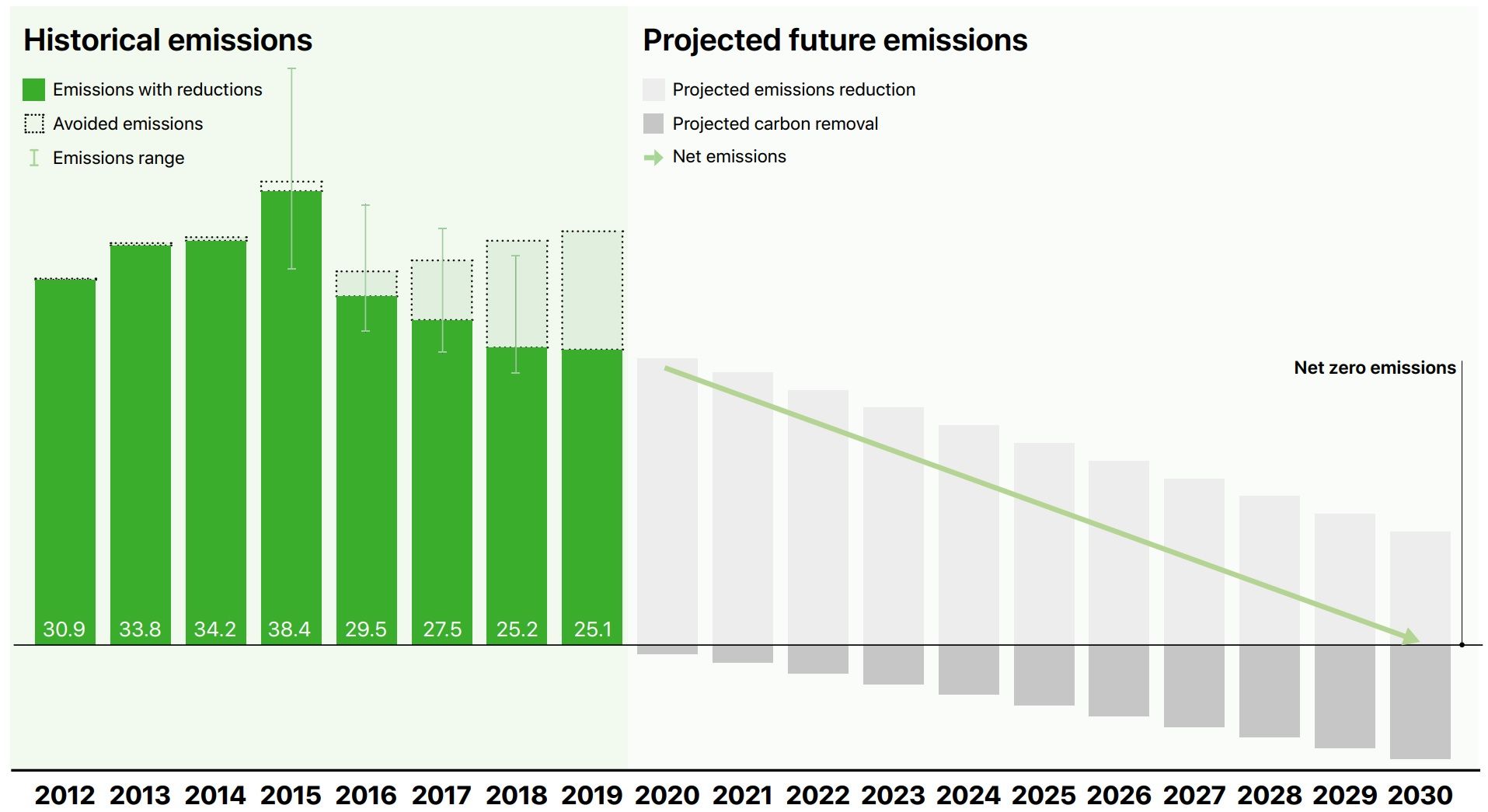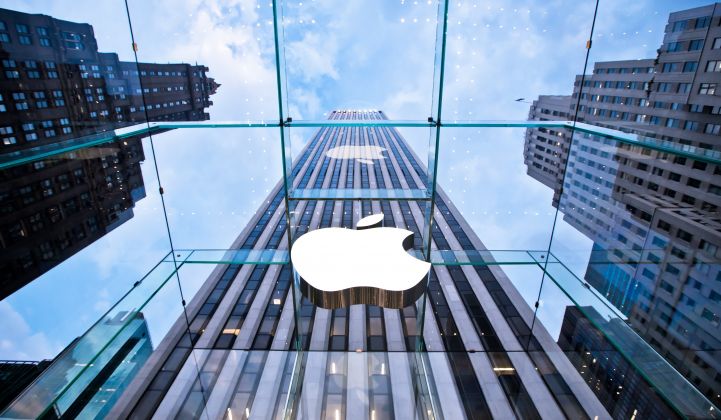Apple committed on Tuesday to becoming carbon-neutral by 2030, pushing its ambitions far beyond its own corporate walls — already 100 percent powered by renewables — to include its vast supply chain and the lifecycle of all its products.
If it succeeds, then by the end of this decade every Apple device sold worldwide will have a net-zero climate impact, from the mining of the materials used to make them, to the ships that bring them to global markets, to the electricity that powers their use.
Perhaps the biggest challenge for Apple will be decarbonizing its immense supply chain, particularly the manufacturers of its products, which account for 76 percent of its carbon footprint. Roughly half of Apple's total emissions come from the electricity used to make its iPhones, iPads, Macs and other products. That creates an enormous opportunity for renewable energy.
Since 2018, Apple has powered its own facilities and operations entirely with renewables. Typically, Apple signs contracts (including virtual power-purchase agreements) with renewables developers like Avangrid and sPower, although it occasionally buys projects outright or makes equity investments.
Transitioning Apple’s entire global supply chain to 100 percent renewable electricity by 2030 is a far more difficult task, but the company says it's making steady progress. Earlier this month microchip giant TSMC, a key Apple supplier, signed what may be the world’s largest corporate renewables deal, agreeing to buy 920 megawatts of offshore wind power from Ørsted in Taiwan.
So far, Apple says that 71 of its manufacturing partners in 17 countries have committed to 100 percent renewables for their Apple-related production, requiring 8 gigawatts of mostly wind and solar capacity. Apple says it will continue to look for ways to help connect its suppliers to renewables projects, particularly in markets where deal structures and regulatory requirements are complex.
Manufacturers choosing to embrace renewables are building a “powerful new competitive advantage that will set them apart in the years ahead,” said Lisa Jackson, Apple’s vice president for environment, policy and social initiatives. “And those who are holding out should know that the clock is ticking,” Jackson wrote in the company’s 2020 Environmental Progress Report (PDF).

Apple will increasingly rely on carbon-removal programs. (Source: Apple's Environmental Progress Report 2020)
Batteries represent one likely growth area in Apple’s approach to energy procurement. Last year the company executed its first deal to deploy a utility-scale battery storage system at one of its solar projects. Storage “has become the next critical frontier in renewable energy,” the company wrote in its progress report, adding that it is "working to advance both short- and long-term electricity storage options.”
The trend of major corporations committing to ambitious decarbonization targets seems to gather pace with each passing month; it is especially prevalent among U.S. technology giants.
Earlier this year Microsoft promised to become carbon-negative by 2030; on Tuesday it announced a series of concrete steps to get there. Google has become one of the world’s largest purchasers of renewable energy, including a 1.6-gigawatt package of deals last year spanning the U.S., Europe and Latin America.
Unlike many tech companies, however, Apple is directly responsible for a vast, carbon-intensive manufacturing supply chain, making its challenges unique. While the company's carbon-neutrality target will require deep changes, Apple acknowledges that it will increasingly rely on programs that remove carbon from the atmosphere to meet its goals.
After peaking in 2015, Apple’s comprehensive carbon emissions had fallen 35 percent by 2019, to around 25.1 million metric tons. The company sees a pathway to reducing them by 75 percent from their peak, but the remaining 25 percent will need to come from carbon-removal activities, such as protecting and restoring forests.
Among its other environmental priorities, Apple is aggressively pursuing new ways to recycle the material in its products. The company has a long-term goal of using 100 percent recycled materials, effectively altogether eliminating the need to mine materials from the earth.




